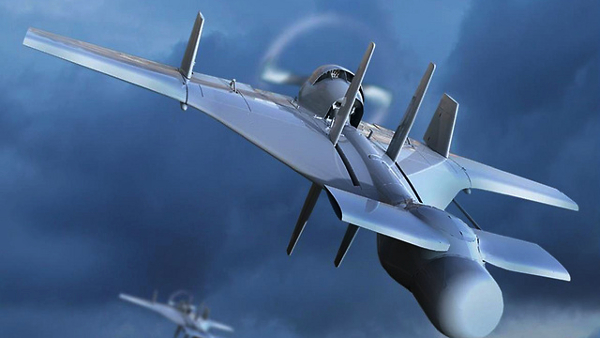Drones are an effective, cheap and a politically desired instrument for neutralising high-value targets, especially selected individual operating in public areas. Based on the attack approach, targets are selected and these drones could be either take a ‘kamikaze’ aerial attack or a ‘directed attack’.
‘Kamikaze’ attack could be as simple as feeding the drone with the target’s Latitude and Longitude so that the drones cruise to the target and crash with explosive mounted over it to destroy them. However, in case of ‘directed attack’, the drones are guided to the missile firing zone and target parameters are provided to the drone system to launch an air-to-surface missile precisely on the chosen target.
For this, usually, a man on the ground supplying accurate real-time information on the target of choice is an important criterion for a successful drone strike, especially with restrictions in public areas. Vehicles like car or military trucks always make for a large trackable target with a linear movement and are the best suited for drone strikes. The key, in every drone strike, is the precision combined with a surprise element. To this effect, these drone strikes are usually the culmination of the combined activity of intense ground and air surveillance until the end of the mission. “The human intelligence (HUMINT) on the ground is essential for tracking the target for days or weeks, confirming target movement habits and finding suitable opportunity and time for a planned strike. So, each weaponized drone strike is always a well-planned activity and a chance happening. Therefore, a network of ground-based human intelligence and digital espionage mechanism are usually the main support required for such covert drone strikes,” explains Milind Kulshreshtha, C4I expert
Does the Indian Army have the capability to take out designated terrorists from Pakistan?
In India, the three Services have used imported well-proven fixed-wing drones for ISR (Intelligence, Surveillance, and Reconnaissance) missions. Indigenisation efforts by Defence Research and Development Organisation (DRDO), Defence PSU HAL and multiple private agencies have been in the progress but due to various dynamics like a lack of Drone regulations which support military and commercial industry. Drones carrying Air-to-Surface missiles are a capability not yet harnessed by India and are an essential technology in today’s asymmetric warfare. Definitely such drone launched a missile strike shall require Indian HUMINT operatives in the region of interest and may evolve an altogether new but effective warfare tactic for India, very similar to one being successfully exploited by the US using the weaponised drones. Nurturing this drone R&D as a home-grown technology by the defence for all three services could be the first positive step.
Drone Attack Tactics
A drone-based air-surveillance utilizes either a fixed-wing or a Rotary configuration unmanned aerial vehicle. A fixed-wing drone has an aeroplane like wings and control surfaces to leverage aerodynamics forces. The rotary drones fly like a helicopter with propeller sets classifying them as Quad-copter or Hexa-copter. Technically, it is possible to have a combination of fixed-wing and rotary drone called Hybrid drone, which combines the benefits of both.
“The payloads used for drone surveillance are high-grade day/night vision cameras, thermal sensors or EW sensors. The advantage of surveillance equipment on the drone is that these can be taken to places required, flown for the time required and the drone platforms are usually inaudible on the ground when flying at altitudes above 100m. Surveillance aircraft and helicopters are far too noisy, make an easy target blip on radars and have soldiers onboard whose lives are at risk. A loss of a drone does not have such nuances involved and proving the nationality of a spy drone brought down is never easy,” Kulshreshtha says.
According to the C4I expert “Unmanned Combat Aerial Vehicles (UCAVs) are exclusively meant for the military for delivering stealthily an explosive payload and missiles, with the capability to engage targets on the ground, on the sea surface or in the air. A swarm of weaponised drones too shall have the potential for offensive and a defensive role.”
Combat drones in possession of non-state actors is a cause of concern and anti-drone technology is not yet mature to provide an impenetrable shield against various kinds of drone attacks. The Saudi Arabia oil refinery attack was one such attack, which caused huge loss caused by a few thousand dollars worth of drones, and to-date legally no one has been branded the responsibility of this devastating drone attack.
“The Strait of Hormuz, off Iran’s southern coast is only 21 miles wide at its narrowest point and is the only sea route to move oil from the Persian Gulf to the world’s oceans. Already there is an active drone warfare over the area, with the US and Iran each regularly downing each other’s drones. This evidently makes the tankers transporting approx. 20 million barrel oil per year highly susceptible to drone attacks,” said a security expert.
Adding “In a drone strike scenario, labelling responsibility to a group or a nation is very difficult and ownership of the drone attack can very easily be claimed by any militia group looking instant fame. With the evolution of Artificial Intelligence (AI) in today’s world, drone units linked to the Ground Control shall be becoming more capable of automatically undertake target engagement activities like Tracking, Target Designation and its annihilation.”
Source: FE
Image Courtesy: Ynetnews
You may also like
-
IAF Aircraft Set Course For Exercise Eastern Bridge VII At Oman
-
IAF Set To Host The Indian Defence Aviation Exposition-II At Jodhpur
-
Defence Secretary to co-chair 5th India-Philippines Joint Defence Cooperation Committee meeting in Manila
-
Simultaneous Launch Of ‘malpe And Mulki’, Fourth And Fifth Ships Of Asw Swc (Csl) Project
-
Aatmanirbharta in Defence: MoD signs Contract with HAL for 240 AL-31FP Aero Engines for Su-30MKI Aircraft
